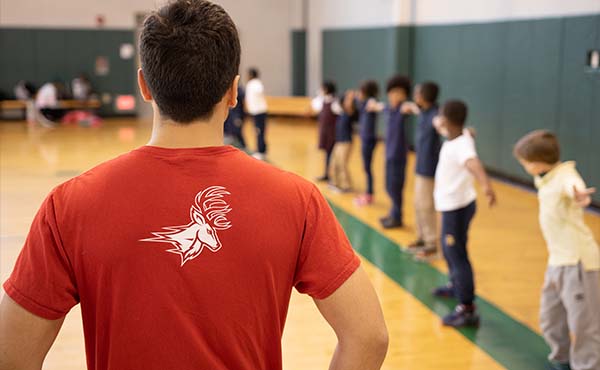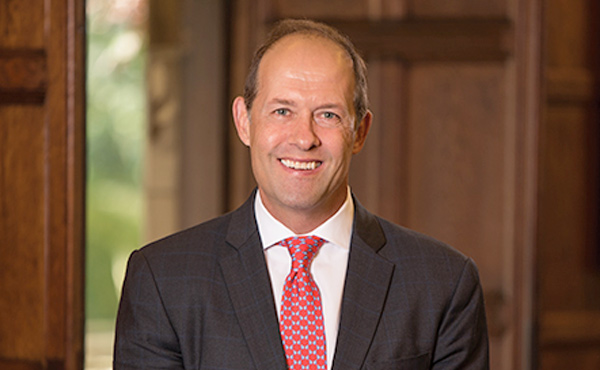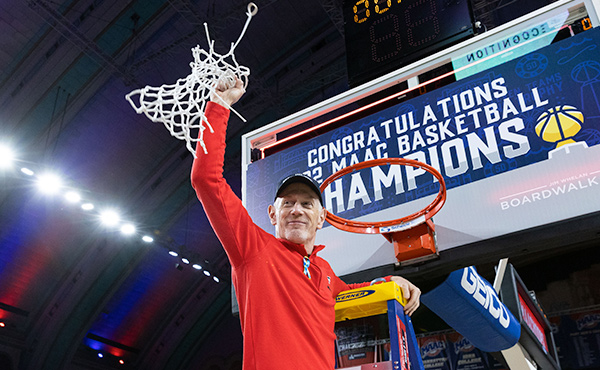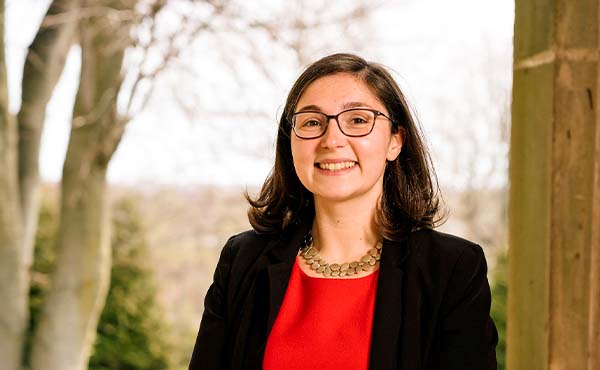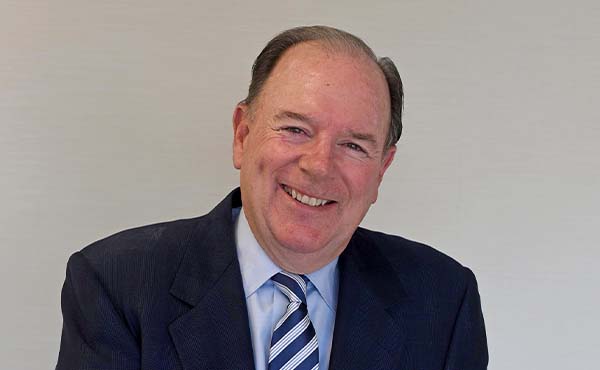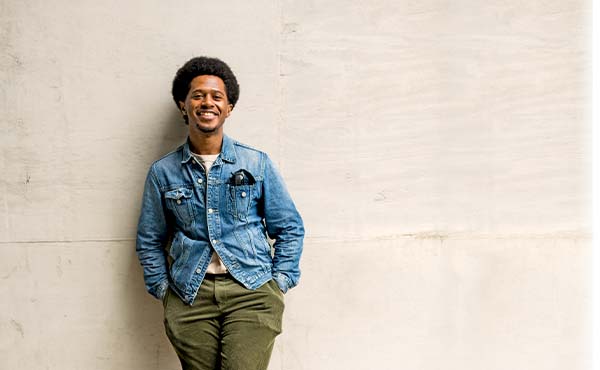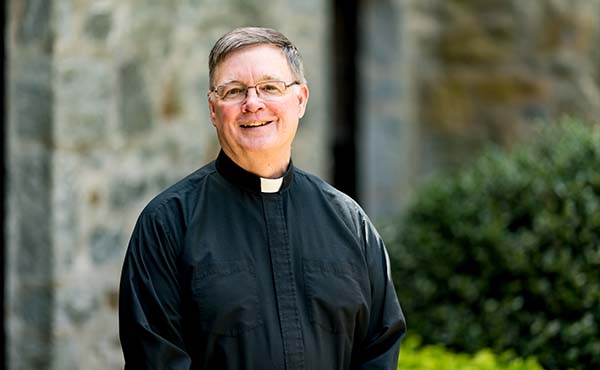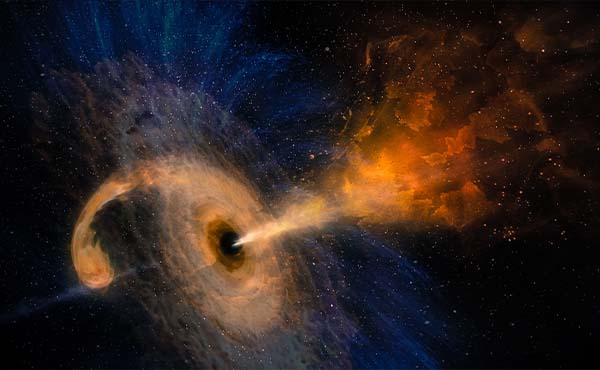Fairfield engineers bring sustainability science to local elementary and middle school students.
Seeing how excited the kids were about engineering and seeing their efforts come to fruition has been an amazing experience.
— Brianna Duswalt ’23
It’s a cool and rainy April afternoon, but Bridgeport’s Wakeman Boys & Girls Club gymnasium is a buzzing hive of activity.
Assistant professor of electrical and biomedical engineering John Drazan, PhD, and a group of Fairfield engineering students known as “SuSTEMability fellows” arrive to a swarm of excited children running toward them screaming, “The engineers are here!”
Made possible by the E2 Energy to Educate Grant offered through Constellation Energy (a leading competitive energy company that provides power, natural gas, renewable energy, and energy management products and services), SuSTEMability is a STEM (Science, Technology, Engineering, and Mathematics) outreach program that engages Fairfield’s School of Engineering students and faculty with students and educators from Bridgeport’s Cesar Batalla School and Wakeman Boys & Girls Club — with a particular focus on sustainable energy and environmental efforts within engineering.
Mentored by Fairfield engineering undergraduates in this community-engaged learning experience, elementary and middle school students acquire technical skills, hone their critical thinking skills, learn basic statistical techniques, and develop a fundamental understanding of science, sustainability, and engineering concepts.
“We’re putting our first-years and sophomores in a position of trust to serve as mentors, which is phenomenally important,” said Dr. Drazan.
Led by the engineering professor and fellows Lorenzo Arabia ’25, Abigail Diltz ’25, Kobi Oktobi ’23, Margaret Millar ’25, and Megan Rourke ’24, each Wakeman session kicks off with an athletic activity such as basketball, to illustrate how STEM principles relate to sports. The sessions then transition into engineering and sustainability lessons.
Using activities like basketball helps young participants see and understand engineering concepts. “We spend the first couple of sessions getting to know the students and incorporating STEM by asking them how buildings and various objects are created, how basketball shots are made, or how the gym is lit up,” explained Rourke.
Following the engineering discussions, the fellows engage their students in activities that apply the concepts they learned – things like basketball layup drills, or building solar cars and fans which are then tested out in the gymnasium.
“What is really cool is that we are doing a lot of hands-on building, where the students have the opportunity to not only measure their basketball performance but also build sustainable systems like a solar car or a solar windmill station,” said Dr. Drazen. “The students are able to collect their own data and see tangibly how they can design these types of systems in a micro scale version, and hopefully apply these lessons in their future careers.”
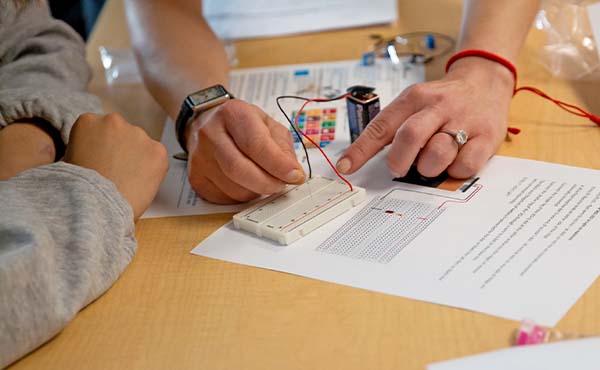
Students built miniature solar cars, fans, LED circuit boards, and crank generators.
“We encourage the students to be bold in their curiosity. We’ve been able to focus on breaking into our groups and talking about how each student can make their own difference in the world by being a hero for those that will live in it after us,” said Rourke.
At Cesar Batalla School, Associate Professor Uma Balaji, PhD, and associate dean Elif Kongar, PhD, program director of Management of Technology, joined SuSTEMability fellows Isabella Carrano ’24, Brianna Duswalt ’23, and Dermot Warner ’24 to engage middle school students in classroom lessons, including one taught solely in Spanish. Topics included: the use of Light Emitting Diode (LED) lamps for energy conservation, how motors and gears work in relation to solar energy, sources of renewable energy, and the responsible use of energy.
“Seeing how excited the kids were about engineering and seeing their efforts come to fruition has been an amazing experience,” said Duswalt of the hands-on classroom activities that included creating LED circuit boards, hand crank generators, solar cars, and solar fans.
“This experience has allowed me and the other fellows to inform future generations on how they can reduce their ecological footprint by small daily changes,” said Carrano. “The SuSTEMability program allows us to expose youth to STEM education and excite them to create change in the world.”
At the School of Engineering, students are taught to be engineers with a higher purpose: they are not only trained in technical skills and knowledge, they are challenged to think about the impact they can make in the community.
Said Dr Kongar, “Engagement in highquality science education is critical to attracting students to the sciences, yet these enrichment opportunities are seldom accessible to populations presently underrepresented in STEM. SuSTEMability addresses both these issues by providing students from diverse backgrounds an understanding of sustainable engineering through age-appropriate enrichment opportunities that illustrate our role — as individuals and as a community — in building a climate-safe renewable future.”
